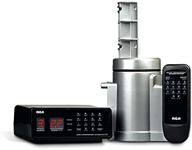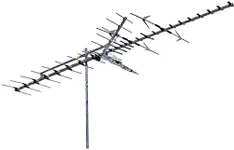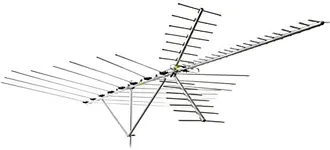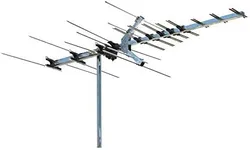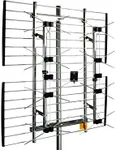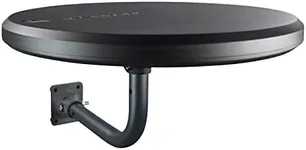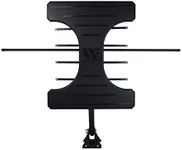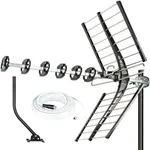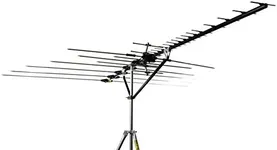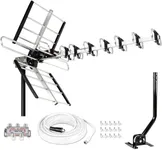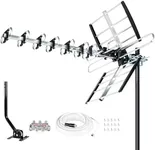Buying Guide for the Best Outdoor Tv Antennas
Choosing the right outdoor TV antenna can significantly enhance your television viewing experience by providing access to a wide range of channels with better picture quality. The key to selecting the best outdoor TV antenna is understanding the various specifications and how they align with your specific needs. Here are the key specs to consider and how to navigate them to find the perfect fit for you.RangeThe range of an outdoor TV antenna indicates how far it can receive signals from broadcast towers. This is important because it determines the number of channels you can access. Antennas with a range of up to 50 miles are suitable for urban areas where broadcast towers are closer. For suburban areas, a range of 50-100 miles is ideal, while rural areas may require antennas with a range of over 100 miles. To pick the right range, consider the distance between your home and the nearest broadcast towers.
Frequency BandsOutdoor TV antennas can receive signals on different frequency bands, primarily VHF (Very High Frequency) and UHF (Ultra High Frequency). VHF channels are typically channels 2-13, while UHF channels are 14-69. Some antennas are designed to receive both VHF and UHF signals, which is important for accessing a full range of channels. If you want to ensure you get all available channels, choose an antenna that supports both VHF and UHF frequencies.
Antenna TypeThere are different types of outdoor TV antennas, including directional, multi-directional, and omnidirectional. Directional antennas focus on signals from one direction, which is useful if most broadcast towers are in the same direction. Multi-directional antennas can receive signals from multiple directions, making them suitable for areas with towers in different locations. Omnidirectional antennas receive signals from all directions and are ideal for areas with scattered broadcast towers. Choose the type based on the layout of broadcast towers around your location.
GainGain, measured in decibels (dB), indicates the antenna's ability to amplify signals. Higher gain means better signal reception, which is crucial in areas with weak signals. Antennas with a gain of 8-15 dB are generally sufficient for most areas. If you live in a location with weak signals or far from broadcast towers, consider an antenna with higher gain. Assess the signal strength in your area to determine the appropriate gain level.
Weather ResistanceSince outdoor TV antennas are exposed to the elements, weather resistance is an important factor. Look for antennas made from durable materials that can withstand rain, wind, and extreme temperatures. Some antennas come with additional features like UV protection and corrosion resistance. If you live in an area with harsh weather conditions, prioritize antennas with robust weather-resistant features to ensure longevity and consistent performance.
InstallationThe ease of installation can vary between different outdoor TV antennas. Some antennas come with mounting hardware and detailed instructions, making them easier to install. Others may require professional installation. Consider your comfort level with DIY projects and the complexity of the installation process. If you prefer a hassle-free setup, look for antennas that are known for easy installation and come with all necessary components.
